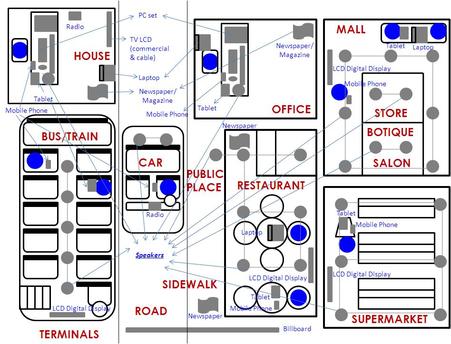
Would you agree that audio advertisement in commercial establishments has the highest level of “Public Captive Market,” once it's correctly used and practiced?
When I was at Duty Free back in 1992, every time customers approach us in the liquor section; they still ask us what’s the promo of what we were selling even they had gone through big streamers and posters of it. Once you hear a sales promo person speaks, that is called “audio.” Even today in MRT. Why do you think if you fall in line when paying your fare, people in the Red Cross ask for donation even there are already boxes for donation placed beside the token booths? Basically, people want to hear something to respond. It’s called SPR (Stimulus-Pause-Response by Tom Hopkins). Ask someone from the Red Cross in MRT why they are doing it and they’ll tell you: most people don’t give donation even there’s a donation box with signs, unless you ask them. The sound that comes out from the Red Cross staff when asking passengers to give donation is audio. Now CADIO is audio. Its main goal is to maximize the ceiling and wall speakers of narrowcast coverage (commercial establishments) like airplanes & airports, amusement parks, banks, boats & piers, boutiques, buildings & elevators, buses & terminals, business centers, clinics, couriers, department stores, gas stations, government places, hardware stores, hospitals, hotels, hypermarkets, malls, offices, places of events, private places, restaurants, salons, schools, shops, show rooms, sports & gyms, stores, supermarkets, trains & stations, warehouse clubs, etc.
Now try to count the number of ceiling (or wall) speakers on the illustration. Just imagine how many of them are not yet really being used productively. These commercial establishments are paying FILSCAP (music or audio royalty for public performance) and they don't get a big return out it. Why not use the speakers in generating revenues and support their products, services, tenants or suppliers in promotion through audio promos or commercials played and heard.
In commercial establishments, audio has the highest form of “attention getter,” not video. In audio, all it takes is to target the ears to hear its audio music or commercial; and you don’t need to get the attention of people by persuading them to see the speakers; whereas in video, you have to convince the eyes to see and watch the video.
In buying what a shopper wants, he/she fails to read POP streamers, posters, signs, flyers, etc.; that will help him/her to decide the best buy. According to Brian Tracy, there was a study done with the top 10% of income earners and they were asked what you are thinking about now. They all answered the same. They were thinking about what they wanted now and how to get it. If you think about what you want and how to get it you begin to move rapidly towards your goal and your goal moves towards you. What you need to do is put your goals on paper. You can't hit a target you can't see. Now this is similar to shoppers who list down their needed products before going to the supermarket. But when you ask these shoppers of what are those brands that they have on their list; you'll see few. Most of it are generic names. They will not list down the brands but they will write down its generic names only. Brands can be written down if someone wants to ride in buying (like one of the members of the family that can’t join the shopping). When the shopper with a list is in the supermarket and hasn’t decided yet what brand he/she likes; then there is an opportunity on POP. Now what is the most efficient? We believe it’s CADIO. Why? You can easily witness the shoppers hearing your commercials using CADIO as a form of POP, but it would be difficult for you to see shoppers watching and reading your advertisements on LCD’s, posters, flyers, streamers, gondola, shelf TV and other visual signs.
Are we convinced that shoppers and customers have more time to read posters, streamers, flyers or other similar forms of POP? Try to observe, even there are signs like entrance and exit, pull or push; a lot of people still, make mistakes & do the other way around. A lot of times, shoppers tend to ask the sales person on promos even there are signs or posters facing them. This means that people don’t have much time to read especially when their main focus in entering a commercial place is to buy what they want and need.
Maximizing the ceiling and wall speakers of different commercial establishments by playing music and commercials will justify the strength of audio in narrowcasting using cadio.
